ASRock Core 100HT-BD : Bringing HTPCs to the Mainstream Market [UPDATED : Noise Issue]
by Ganesh T S on July 19, 2010 9:34 PM EST- Posted in
- Home Theater
- Arrandale
- ASRock
- Media Streamer
- Core i3
- HTPC
One of the most interesting aspects of the Arrandale platform is the fact that the GPU is integrated in the same package as the CPU. The GPU die also contains the PCIe and DDR3 memory controller. While the main CPU is fabricated in the 32nm process, the GPU die is fabricated in the 45nm process. Placing the GPU and CPU in the same package saves on power and also board costs. The graphics part of the GPU die in the package is an evolutionary version of the Intel G45 IGP. A comparison of the Intel HD Graphics in the Arrandales and the earlier G45 is provided below.

An interesting thing to note here is the availability of dynamic frequency scaling for the Arrandale GPU, which actually lowers the power consumption of the system. A 900 MHz GPU part on a typical Clarkdale system would up the TDP by 15W or more compared to the lowest end Clarkdale with a 733 MHz GPU. On the Core 100 HT-BD, however, overclocking doesn't require any special thermal arrangements. The higher frequencies kick in only when the load on the GPU becomes high.
We had earmarked the Clarkdales as the perfect HTPC platforms earlier this year. This Arrandale offering may actually tempt us to revise our opinions, given the form factor and the power profile. We will cover this in detail in the later sections. In the rest of this section, we will cover the features of the Intel HD Graphics engine, as it relates to HTPC users. Before going into the details, let us take a look at what Intel has improved in terms of video decode and processing in this iteration of their IGP.
DXVA Compatibility
Intel's support for DXVA came in for a lot of criticism during the G45 days. The paranoia inside the company made it impossible for open source enthusiasts to get hold of the special DXVA interface used by Intel. It used to be made available under NDA to various ISVs (Independent Software Vendors) such as Cyberlink, ArcSoft etc. Thankfully, things have been slowly changing for the better. Currently, most applications (except for VLC) are able to take advantage of the DXVA acceleration provided by the HD Graphics engine. The screenshot below gives us a quick idea of the DXVA capabilities of the Core i3-330M in the Core 100 HT-BD. It is interesting to observe that there is no VLD mode for VC-1, but we did observe 1080p VC-1 Blu-Rays play with less than 5% CPU usage on ArcSoft TMT. This just indicates that the interface to full acceleration mode for VC-1 is available only under NDA as of now.
HD Audio Bitstreaming
Right from its debut, the Arrandales have been able to bitstream HD audio from Blu-Ray discs played back through Cyberlink's PowerDVD or ArcSoft TMT. The Core 100 HT-BD is no different. We were able to play back all Blu-Rays with bitstreaming to the AV receiver, as the following screenshots show. In addition, hardware acceleration with Intel HD Graphics shows its class, with low CPU utilization being observed during playback. Despite the red spikes observed in the DPC Latency Checker program, we didn't notice any audio dropouts or stutters in the video.
Using the open source ffdshow Audio Decoder, HD audio can also be bitstreamed out of standalone MKVs and M2TS files. (More on this in the next section)
With the above features, Intel HD Graphics seems to be a winner, and the Core 100 HT-BD could potentially be the utopian HTPC that enthusiasts have been searching for. Is that really the case?
Driver Support - Intel Misses the Boat!
Since the release of the G45, videophiles have been clamouring for the support of 23.976 fps display refresh rate. Intel caved in and released a driver where you could choose 23 Hz in the graphics control panel. Unfortunately, this only results in a refresh rate of 24 fps. While watching videos encoded at 23.976 fps, this results in a small stutter every 40 seconds or so. Most people get past this by setting the refresh rate of their display to 60 Hz. However, dedicated enthusiasts still see this as a major shortcoming of the platform.
Another issue which has remained since the G45 days is the efforts taken to open up the DXVA specifications of the GPU for open source developers. Lot of progress has been made over the years, but full VC-1 decode acceleration remains elusive in applications like MPC-HC or VLC. As we discussed in the DXVA Compatibility subsection, the VC1_VLD mode which is commonly utilized by open source video decoders is absent. However, Intel's marketing team does indicate complete VC-1 decode acceleration. We can only surmise that this is made available for the Microsoft and other ISV decoders to make use of.
The drivers supposedly support advanced deinterlacing, but users do not have as much control over the algorithms used as they have when using ATI HTPC cards such as the Radeon 5xxx series. Noise reduction algorithms are also not transparent to the users. The frequency of driver updates is rather low, and issues continue to remain unaddressed.
If the end user can put up with these iGPU limitations (personally, I can), the Core 100 HT-BD is indeed a very good choice. This will be further elaborated in the next few sections.


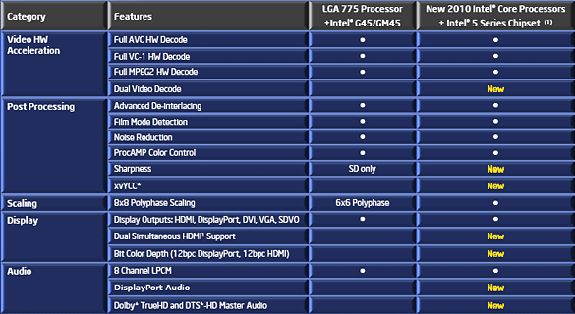
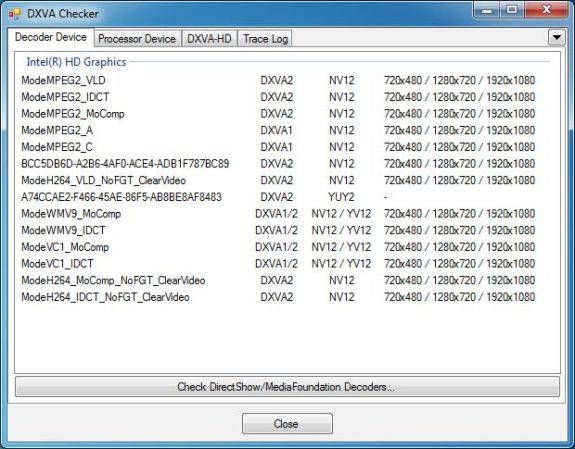
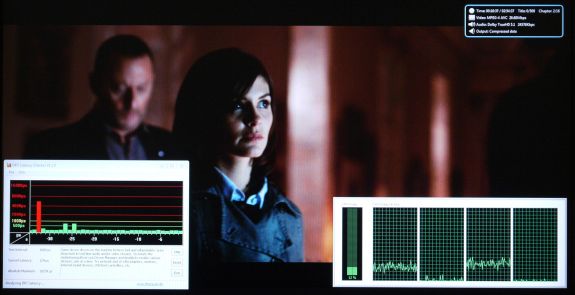
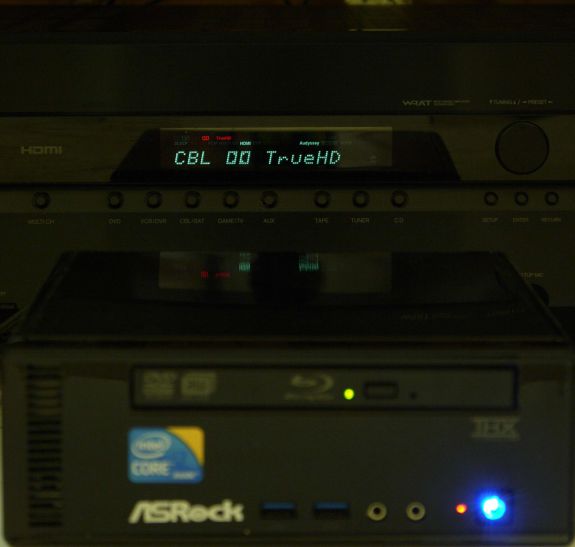
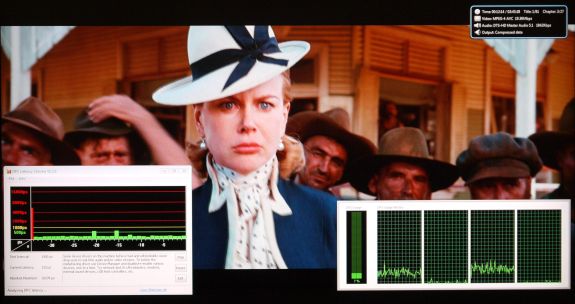
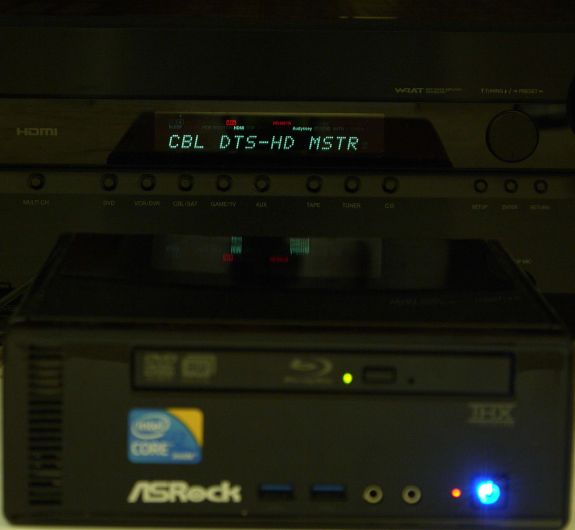








107 Comments
View All Comments
tmservo - Tuesday, July 20, 2010 - link
This is a good point regarding tuners. I also wish there was an internal. But I can deal without. Right now, I have 4 tuners: a SiliconDust dual tuner QAM (connects over ethernet) a 2250 and a ATI650. But I almost never watch that many programs at once, and with the cable companies limiting, they are on my elimination list. This fall SiliconDust is supposed to have their 3 tuner CableCard solution out. At the moment they have that, my need of any cards in my PC completely go away. Completely goes away. I'll have better TV input.Now, I wish there was a single PCI-E x1 slot so I could consider the Ceton, but I could deal.
jnmfox - Tuesday, July 20, 2010 - link
Surprised Silicon Dust's HDHomeRun hasn't been mentioned:http://www.silicondust.com/products/hdhomerun/atsc...
One of the best tuners around and will work on any networked PC. Plus you don't have to add bulk to your HTPC by making it bigger to fit a tuner inside. One of the best HTPC purchases I've made.
Braumin - Wednesday, July 21, 2010 - link
Everyone needs a different tuner. Including any tuner would just be a waste of money since it would not be guaranteed to work on the owner's system. USB and Network tuners are available and make this a complete DVR.CharonPDX - Wednesday, July 21, 2010 - link
I already use an HD HomeRun as my tuner, so no internal tuner isn't a deal killer at all for me. (And I may get a second HD HomeRun.)jrwalte - Wednesday, July 21, 2010 - link
Did you ever consider using a USB tuner?EnzoFX - Wednesday, July 21, 2010 - link
There are probably more USB based tuners these days than internal tuners being made. Secondly, I strongly recommend the network based HDHomeRun tuner. Lastly, this is probably targeted at people who wouldn't want to install an internal tuner.RamIt - Tuesday, July 20, 2010 - link
Give me an expansion slot and I'll buy one. until then no thx.ganeshts - Tuesday, July 20, 2010 - link
RamIt,Most of what can be achieved through an expansion slot is possible using external USB devices. The Core 100 unit is quite liberal in that respect, providing 6 USB 2.0 ports and 2 USB 3.0 ports.
Also, note that the chipset used is the HM55. Compare this with a similarly spec-ed notebook computer. It is difficult for manufacturers to provide expansion slots, and even if they do, the costs of the devices fitting those slots are much higher than their external USB counterparts.
Stokestack - Tuesday, July 20, 2010 - link
Unfortunately, the only USB 3 ports are on the front. This is a mistake. People setting up a nice home-theater system don't want ugly wires hanging out of their components full-time.Receiver makers are making the same baffling mistake with USB ports for iPods. Why on earth would I want this wire dangling off the front of the unit all the time? A port on the back allows you to plug a dock, an external drive, or tuner in and keep it out of sight.
GeorgeH - Tuesday, July 20, 2010 - link
At $700 this will be competing with the Mac Mini. It has superior hardware specs, but if I were looking for something small, quiet, and attractive to put in my living room the Mini would win easily. This box is just to close to a basic mini-ITX box that any troglodyte could throw together - ASRock really needs to leverage their ability to make completely custom parts before they have a truly compelling product.It's cool to see more high-powered boxes in this form factor, I just wish it had been executed better.